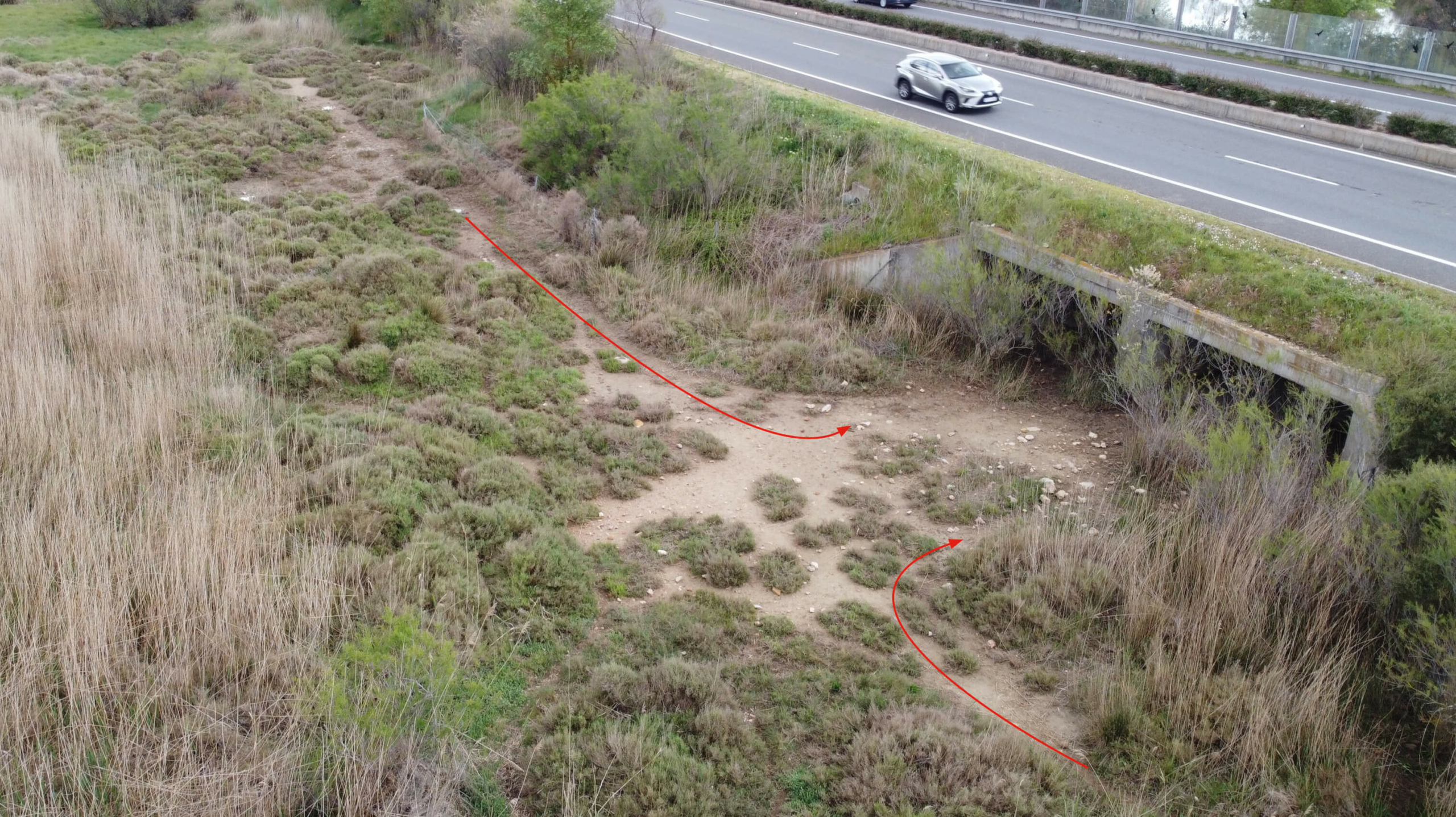RATIONALE. Fencing
The installation of fences, along with wildlife passages, is one of the most effective measures of reducing wildlife mortality on transport infrastructure (van der Ree et al., 2015). However, fences increase the barrier effect that infrastructure pose on wildlife. When there are no wildlife passages in the proximities, it is important to assess, evaluate and balance these two impacts comprehensively to implement the most appropriate mitigation measure. Innovative technologies, such as level crossings with Animal Detection Systems could be implemented in those situations. The appropriate design, materials and dimensions must be chosen according to the target species. However, more research is needed to evaluate effectiveness of the different types of fences for the different taxa (Animex, 2021; Conan et al., 2022).
General description and targets
Fences, if appropriately designed, installed and maintained, are one of the most effective measures to prevent animals from accessing roads or railways, especially if combined with wildlife passages.
Fences can significantly reduce the risk for vehicle collisions with large animals and, if appropriately designed, could also reduce traffic mortality for small animals. However, as fencing implies a physical barrier that severely limits the movement of fauna across infrastructure, and is expensive to install and maintain, it should only be installed on selected parts of infrastructure where collisions are particularly common.
Fencing, where required, must always be combined with appropriate wildlife passages reducing the barrier effect and providing a safe crossing point for target species (see Section 5.5 – Wildlife passages). Thus, fences serve two purposes: preventing animals from accessing infrastructure and guiding them to safe crossing points (Figure 5.2.1).
A fencing system must be planned comprehensively and with foresight. It must be based on knowledge about the ecology and behaviour of target species and include:
- Clear identification of target species and specification of mitigation objectives.
- Analysis of landscape features and habitats that need to be reconnected to provide suitable locations for wildlife passages.
- Localisation and design of gates, cattle grids and escape facilities, if required.
- Identification of the necessary length of the fencing system and design of fence endings.
- Decisions about the fence mesh or alternative material types, pole type, methods of ground anchoring or use of reinforcements which match the target species’ requirements.
- A maintenance plan.
- Any species that is living in or may move through the area during dispersion or long-distance migrations should be included within the ‘target species’, to inform decisions about the location and type of crossing structures and how fences can guide animals to them.
- An assessment of the potential ecological impact of the fence should be undertaken, particularly in areas of major ecological interest, such areas where endangered species inhabit or ecological corridors, to identify mitigation measures which avoid any adverse impacts.
